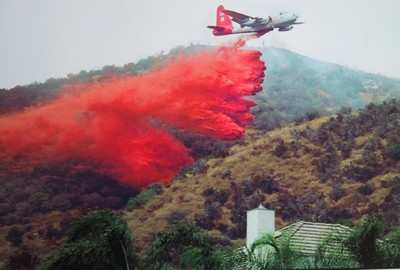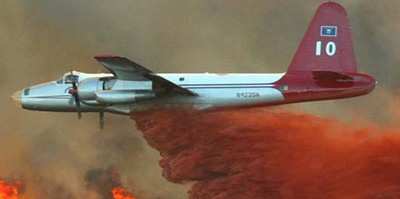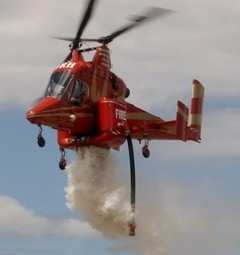The American Helicopter Services & Aerial Firefighting Association (AHSAFA) Annual Meeting Focused On Wildland Firefighting Issues For The Coming Year
Representatives of the US aerial firefighting industry predict ongoing challenges involving fleet modernization, as legacy aircraft continue to age, and the Federal government has yet to sign off on a viable transition plan for operational funding of proposed, new generation, large airtankers.

"The private, aerial firefighting industry has submitted a viable plan to replace today's dwindling number of former Cold War Era military aircraft with modern tankers, derived from commercial jets," said Tom Eversole , Executive Director of the American Helicopter Services and Aerial Firefighting Association (AHSAFA) at the group's annual meeting in Boise, Idaho, in November. "Although that plan was submitted more than a year ago, it has yet to be acted upon by the US Forest Service (USFS)--even though the airframe acquisitions and tanker modifications would be at no cost to the government."
As Eversole pointed out, the remaining large airtanker fleet of 8-9 propeller-driven, twin- piston engine P2V Neptunes, operated by two companies today, are being stretched thin as fire seasons get longer and more destructive, and aircraft are retired.

"The USFS indicated that given the United States current wildland firefighting conditions, they would require at least 22-24 next-generation large airtankers," Eversole stated. "While the operators are willing to buy the airframes, and install the fire retardant tank systems at their own expense, they need to be assured the government will provide sufficient funding of multi-year, operational contracts, in order to justify the acquisition and modification costs--and to have the aircraft available when needed. It is not clear yet how the USFS is going to do this, especially at a time of severe fiscal constraint."
The USFS, in fact, put out a request for proposal (RFP) to the industry last year for up to seven new generation aircraft to be operated under multi-year contracts. However, the contract awards were protested by three of the losing bidders, and the agency reopened the competition and issued new RFPs to all the companies that originally had submitted proposals. The USFS is expected to announce the results by March of this year, but Eversole predicts there may be additional protests.
"This will delay issuing the contracts and result in a further shortage of large airtankers for the immediate fire season," he noted. "The P2V Neptunes are being retired and the USFS has indicated it will not contract for legacy aircraft after the current solicitation. We do not see any new tankers with operational funding prior to the end of 2013, especially if additional protests are entertained."

The AHSAFA annual meeting also addressed an issue concerning the validity of an aircraft's type certificate, when being used in a government directed air operation (designated as a public aircraft), such as aerial firefighting. To date, the FAA has given no clear guidance to commercial operators regarding the interface of public and private operations and how that may affect the airworthiness certification of the individual aircraft involved. Some operators have expressed serious concerns regarding recent USFS contract amendments and are reluctant to agree until the FAA has clearly resolved the issue. "We are going to try to come to some type of an agreement with the USFS and the FAA as to how to handle this, in a meeting scheduled with both agencies for February," Eversole stated.
The American Helicopter Services and Aerial Firefighting Association (AHSAFA) is the Washington-based trade association representing the commercial operators of helicopters and fixed wing aircraft engaged in aerial wildland firefighting.
 ANN's Daily Aero-Linx (04.16.24)
ANN's Daily Aero-Linx (04.16.24) Aero-News: Quote of the Day (04.16.24)
Aero-News: Quote of the Day (04.16.24) Airborne 04.10.24: SnF24!, A50 Heritage Reveal, HeliCycle!, Montaer MC-01
Airborne 04.10.24: SnF24!, A50 Heritage Reveal, HeliCycle!, Montaer MC-01 Airborne 04.12.24: SnF24!, G100UL Is Here, Holy Micro, Plane Tags
Airborne 04.12.24: SnF24!, G100UL Is Here, Holy Micro, Plane Tags Airborne-Flight Training 04.17.24: Feds Need Controllers, Spirit Delay, Redbird
Airborne-Flight Training 04.17.24: Feds Need Controllers, Spirit Delay, Redbird





